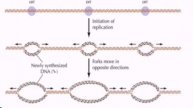About vSphere Replication - VMware Vsphere Tutorial
About vSphere Replication is a free tutorial by Larry Karnis from VMware Vsphere course
Link to this course(Special Discount):
https://www.udemy.com/course/vmware-vsphere-60-part-5-vm-backup-and-replication/?ranMID=39197&ranEAID=Gw%2FETjJoU9M&ranSiteID=Gw_ETjJoU9M-1YhwPSMeuvAZxnjQa7g4ZQ&LSNPUBID=Gw%2FETjJoU9M&utm_source=aff-campaign&utm_medium=udemyads
This is the best VMware Vsphere Course
Course summary:
Implement VM Distaster Preparedness with vSphere Replication
Download and import the vSphere Replication Appliance
Understand the trade offs between local and site to site replication
Verify that vSphere Replication is working in your environment
Understand and configure Recovery Point Objective and Recovery Time Objective policies
Perform scheduled and ad hoc VM replications
Recover replicated VMs back into service
Implement VM back up and recovery using VMware Data Protection
Download and import the VMware Data Protection virtual appliance
Register vSphere Data Protection with vCenter
Provision and connect backup storage to your VDP appliance
Create back up jobs to back up one or more Virtual Machines
Perform scheduled and ad hoc VM back ups
Perform full VM recoveries
Perform individual file level recoveries using VDP's self-service file recovery portal
English [Auto]
So what is Vee's for replication this her replication is a service that allows you to hotsync a running VM to a copy that is maintained on another ESX host. Now that other ESX I host can be an ESX I host within the same V Center server environment or we can replicate to an ESX I host in another VI center server environment writing its own the sphere replication appliance. So locally we can replicate as an alternative to backup and recovery and remotely we can replicate to a different v center environment as a defense against a catastrophic infrastructure failure a data center outage that sort of thing. Now vse for replication whether it happens local or remote works the same way. Periodically the VM is snapshot it an all updated disk blocks. In other words all disk blocks in the source VM that have changed since the last synchronization point are simply copied over to the virtual disk image of the replicated VM on the target ESX host and as we'll see. I can set the synchronization period from his little to once every 15 minutes to as long as once every 24 hours. And the purpose of these for replication is rapid V.M. recovery. So here's the point. If I were a VCR replication running on a VM and that VM experience has some kind of catastrophic failure and that could be severe data corruption it could be a loss of the victims virtual disk image due to a storage failure. It could be an entire data center outage. It doesn't matter why the VM failed. What I can do is I can go to the recovery site and I can simply restore the VM and I can quite often restore it faster than I could restore the VM from backup. This is especially the case if my infrastructure's failed my sand my data center that sort of thing. So restoring from backup isn't an option because the systems that I would normally restore on have failed. So if I have a VM host a storage or complete data center failure what I do is I go to the target site. I launch web client. I pointed at the center server. I go over to vse for replication. I click on manage. I go to in-bound replications I find the VM that I want to recover I right click on it and I say recover. I run a very simple recovery wizard and that creates a new copy of the VM that I can then put up or sorry that I can then power on Connect to the network and put into service.
About vSphere Replication Learn to backup and recover VMs using VMware Data Protection and how to replicate VMs using vSphere Replication
Видео About vSphere Replication - VMware Vsphere Tutorial автора Мир патологии
Видео About vSphere Replication - VMware Vsphere Tutorial автора Мир патологии
Информация
13 ноября 2024 г. 20:26:43
00:02:46
Похожие видео






















